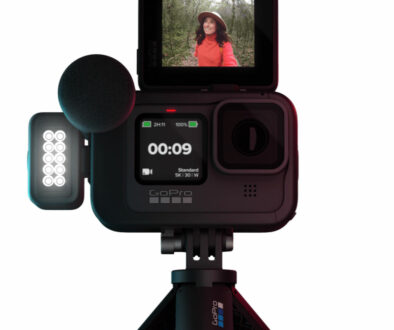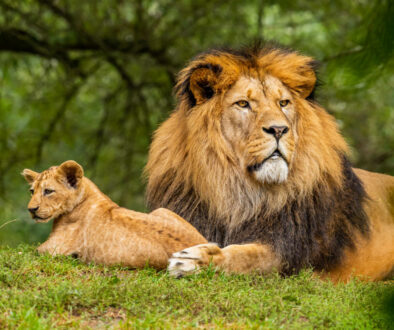What is a Wide Angle Lens and How to Choose One
To cut to the chase, a wide-angle lens has a short focal length. Therefore, the angle of view of the lens is wider. Also note that the terms angle of view and field of view are sometimes used interchangeably in photography. They refer to the same thing but are technically different, a topic for another time. Instead, this article will delve into wide-angle lenses and how to choose one for your photography.
When looking at a lens’s specifications, you will undoubtedly come across the term angle of view. Manufacturers measure this specification in terms of degrees. For any lens, the wider the angle, the wider the lens itself. And in the same breath, the focal length of the lens is shorter.
Please note there is an inverse relationship between focal length and the angle of view of a lens. The shorter the focal length larger the angle of view. You cannot have a situation where a lens has a long focal length and a very wide angle of view. That is an optical impossibility.
Coming back to wide angle lenses and how to choose one, let’s give you the definition of wide angle lenses, followed by some examples of wide angle lenses.

Everything there is to know about wide angle lenses
This brings up the question of what qualifies as a wide-angle lens. Any lens with a focal length equivalent to or less than 35mm is considered a wide-angle lens.
The most common wide-angle lens is the 18 to 55 mm kit lens. This lens is designed for crop camera sensors and offers an angle of view of 74° 20′ to 27° 50′. Though the zoom end does not qualify as a wide-angle focal length, the shorter side of the focal length does.
1. What is the purpose of wide-angle lenses?
The whole purpose of wide-angle lenses is to capture a broader slice of a scene in front of you. The wider a lens’ angle of view, the bigger slice of the scene that the lens can capture.
Wide angle lenses are primarily used for shooting landscapes, architecture, interiors, and group photos. Wide angle lenses are also suitable for street photography (urban), weddings, and a few other genres of photography.
2. Wide angle vs. ultra-wide-angle lenses
Wide angle lenses can be further divided into two segments; wide-angle and ultra-wide-angle lenses. Lenses with a focal length between 35mm and 24mm are generally considered wide-angle lenses. On the other hand, lenses with a focal length that’s less than 24mm are considered ultra-wide-angle lenses.
Wide angle lenses with an even shorter focal length, such as less than 12mm, are also available. These lenses are known as rectilinear lenses. Lenses that are shorter than 8mm are considered fish-eye lenses. In this discussion, we’re not going to discuss rectilinear and fishy-eye lenses in detail.

3. Primes vs. zoom
Wide-angle lenses can be both primes and zooms. A fixed focal length lens is known as a prime lens. They don’t have a zoom ring on them. To change the frame and to include more or less with such lenses, you’ve to take a few steps forward or backward. Examples of prime wide angle lenses are the 24mm f/1.4, the 28mm f/1.4, the 20mm f/1.8, and so on.
On the other hand, lenses that have a variable focal length are referred to as zoom lenses. These lenses have a zoom ring on them. You can change the focal length by turning the zoom ring. Such lenses have two separate maximum aperture values. Not all of them but quite a few of them have this. For example, the Nikon AF-P DX NIKKOR 10-20mm f/4.5-5.6G VR.
The first one is the maximum aperture that the lens can open to when it is at its shortest focal length (10mm). The second aperture value is when the lens is at its longest focal length (fully zoomed in).
As mentioned above, there are a lot of zoom lenses that have a fixed aperture value. For example, the Canon EF 16-35mm f/2.8L III USM is one such lens. There is also the wonderful Sigma 14-24mm f/2.8 DG HSM Art. Then there is the versatile Canon EF 16-35mm f/4L IS USM.
4. A word on tilt-shift lenses
Tilt-shift lenses are theoretically lenses that fall under the special category, just as fish-eye and macro lenses do. They are also sometimes categorized as wide-angle lenses. Tilt-shift lenses aim to ensure that straight lines are always straight and not bending inwards to meet.
The most important property of tilt-shift lenses is that they can tilt the plane of focus independent of the image plane. This is the tilting property of the lens. The other property of these lenses is that they can move the lens parallel to the image plane either vertically or horizontally.
Tilt-shift lenses are the best for photographing architecture, properties, and interiors. These lenses have special shifting properties where the lens can travel horizontally and vertically with reference to the image plane and negate the curvilinear effects that other wide-angle and ultra-wide lenses suffer from.

What considerations to keep in mind when choosing a wide-angle lens?
The million-dollar question in everyones’ mind when looking for a wide-angle lens is what are the parameters you’ve to keep in mind when choosing a wide-angle lens.
The first thing is the focal length. The focal length determines how much of the scene the lens can project onto the camera sensor. The focal length determines the angle of view. As we have already seen wider, the focal length of a lens larger is the angle of view.
If you want to shoot landscapes, architecture, and interiors, you need a lens that offers a focal length of 35mm to 24mm.
A focal length of less than 24mm is also used for interiors.
Some photographers prefer using rectilinear and fish-eye lenses for particular purposes. These lenses offer a visual distortion that makes them special. Fish-eye and rectilinear lenses are not the same. Fish-eye lenses provide an angle of view of 180 degrees which is why you get that weird circular perspective. Straight lines are curved, and there is severe barrel distortion. Some photographers have used fish-eye lenses for even shoots among a mix of other lenses, to capture the ambiance of a place. Beyond that, fish-eye lenses have a minimal scope of use.
Rectilinear lenses, on the other hand, offer a smaller angle of view compared to fish-eye lenses but larger than ultra-wide angle lenses. These lenses are often used for shooting perspectives larger than traditional wide-angle lenses but not necessarily the same perspective as fish-eye lenses. These lenses, too, have noticeable barrel distortion. Straight lines are always curved. Rectilinear lenses are sometimes used for landscape photography as well.

Conclusion
Wide-angle lenses are designed for shooting a wide range of photography genres. You can do much with a wide-angle lens, from landscapes to cityscapes, environmental portraits, street photography, interiors, and architecture.
Wide angle lenses are of diverse varieties, focal lengths, and features. Different types of wide-angle lenses are suited for different types of photography. For example, you cannot shoot the same kind of imagery with a standard wide-angle lens that you can shoot with a fish-eye lens or a rectilinear lens.
Choosing the right lens for the job requires a good understanding of each of the diverse varieties of wide angle and ultra wide angle lenses available. It can be confusing, but hopefully, now that you’ve read this discussion, you’re in a better position to choose the right lens for your needs.

















